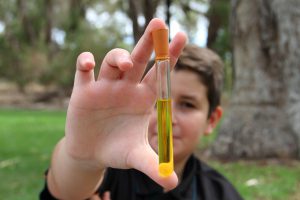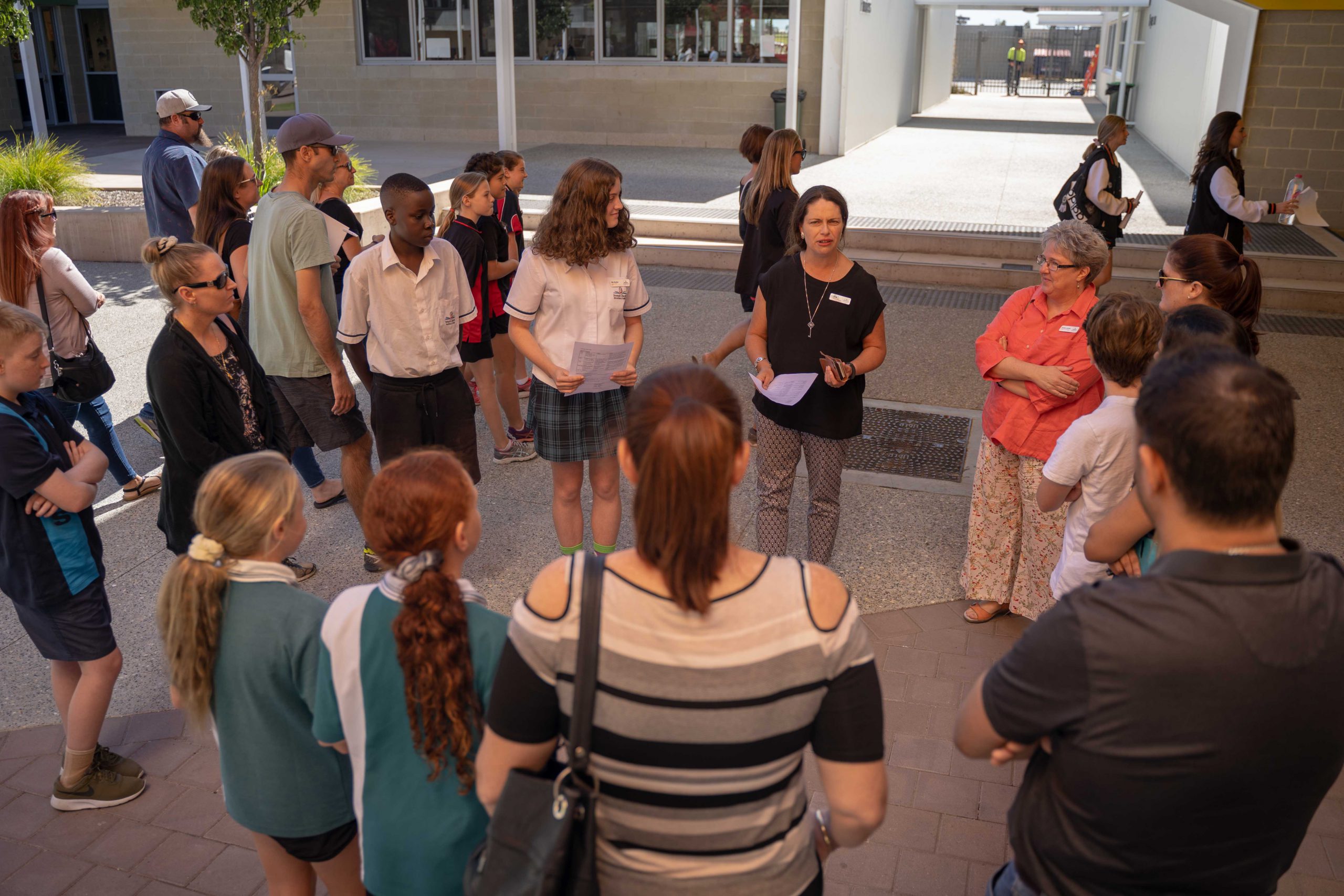Earth and Environmental Science (General)
Course Code: GEEES/GTEES
Domain: Science
Timetable: Semester 1 and 2
Length of Course: 2 Years
Unit Information
Science is a dynamic, collaborative and creative human endeavour arising from our desire to make sense of
our world. Science knowledge is contestable and is constantly revised, refined and extended as new
evidence arises. Students can experience scientific discovery and nurture their natural curiosity about the
world around them.
Earth and environmental scientists integrate knowledge drawn from diverse scientific disciplines in the study
of Earth’s ancient and modern environments. Scientists strive to understand past and present processes so
that reliable and scientifically-defensible predictions can be made about the future.
In this course, students develop their investigative, analytical and communication skills. They develop critical
and creative thinking skills, and challenge themselves to identify questions and draw evidence-based
conclusions using scientific methods. This development of scientific literacy enables students to investigate
the natural world and the effects of human activity on our environment. They can apply these skills to their
understanding of science issues in order to engage in public debate, solve problems and make
evidence-based decisions about contemporary local, national and global issues. The knowledge,
understanding and skills introduced in this course will provide a foundation for further studies or
employment in a wide range of fields.
Year 11
Unit One
The Earth’s surface structure is continually changing, and students learn about the role of plate tectonics in
the surface structure of the Earth. They examine the evidence for plate tectonics and the occurrence of
volcanoes and earthquakes.
Students learn to determine the properties of minerals and to distinguish between igneous, sedimentary and
metamorphic rocks based on their textural and mineralogical differences. These practical activities develop
students’ observation and classification skills.
Students use science inquiry skills to explore features of the Earth’s surface. Fieldwork is an important part
of this unit, providing valuable opportunities for students to work together to observe natural environments.
Unit Two
Students gain an understanding of different environments as they examine local ecosystems, the effects of
change on Earth’s spheres, and the biogeochemical cycles that link them. They recognise that changes in the
atmosphere are related to changes in biodiversity.
Students use science inquiry skills to explore features of local ecosystems. Fieldwork is an important part of
this unit, providing valuable opportunities for students to work together to collect first-hand data, and to
observe natural environments.
Environments which can be studied include beaches, parklands, catchments, waterways, lakes, forests and
bushlands, farmland and gardens. Students examine the processes and interactions occurring, and analyse
the impact of human activity on the environment.
Year 12
Unit Three
Earth resources are required to sustain life and provide infrastructure for living, for example, food, shelter,
medicines, transport, and communication, driving ongoing demand for mineral and energy resources and
biotic resources. In this unit, students explore renewable and non-renewable resource formation and
analyse the effects that resource extraction, sustainable use and associated rehabilitation processes have on
Earth systems.
Students examine the occurrence of non-renewable mineral and energy resources and review how an
understanding of Earth and environmental science processes guides resource exploration and extraction.
They investigate how the rate of extraction is managed to sustain the quality and availability of renewable
resources, including water, energy resources and biota, and the importance of monitoring and modelling to
manage these resources at local, regional and global scales. Students learn about ecosystem services and
how natural and anthropogenic changes of the biosphere, hydrosphere, atmosphere and geosphere
influence resource availability and sustainable management.
Students investigate the ways in which science contributes to contemporary debate regarding local, regional
and international resource use and action for sustainability, and recognise the limitations of science in
providing definitive answers in different contexts.
Students use science inquiry skills to collect, analyse and interpret data relating to the formation, extraction,
and processing of resources. They critically analyse the range of factors that determine management of
renewable and non-renewable resources.
Unit Four
Earth hazards occur over a range of timescales and have significant impacts on Earth systems across a wide
range of spatial scales. Investigation of naturally occurring and anthropogenic Earth hazards enables
prediction of their impacts, and the development of management and mitigation strategies. In this unit,
students examine the causes and effects of naturally occurring Earth hazards, including volcanic eruptions,
earthquakes and tsunamis. The composition of magma is examined to predict the degree of volcanic
explosivity and hence the risk of hazard that an eruption could inflict on the environment. This unit focuses
on the timescales at which the effects of natural and human-induced change are apparent and the ways in
which scientific data are used to provide strategic direction for the mitigation of Earth hazards and
environmental management decisions.
Students review the scientific evidence for climate change models, including the examination of evidence
from the geological record, oceanic and atmospheric data, and explore different interpretations of the same
evidence. They consider the reliability of these models for predicting climate change, and the implications of
future climate change events, including changing weather patterns, globally and in Australia, for example,
changes in flooding patterns or aridity, and changes to vegetation distribution, river structure and
groundwater recharge.
They investigate the ways in which science contributes to contemporary debate regarding local, regional and
international management of Earth hazards, evaluation of risk and action for sustainability, and recognise
the limitations of science in providing definitive answers in different contexts.
Students use inquiry skills to collect, analyse and interpret data relating to the cause and impact of Earth
hazards. They critically analyse the range of factors that influence the magnitude, frequency, intensity and
management of Earth hazards at local, regional and global levels.
Pathway Information
Tertiary
Workforce
Students undertaking this course may wish to consider tertiary studies in:
- Agricultural Science
- Environmental Science
This course suits direct workforce entry into the following:
- Laboratory Worker
- Conservation
- Agriculture
Additional Information
Estimated Charges: $70



